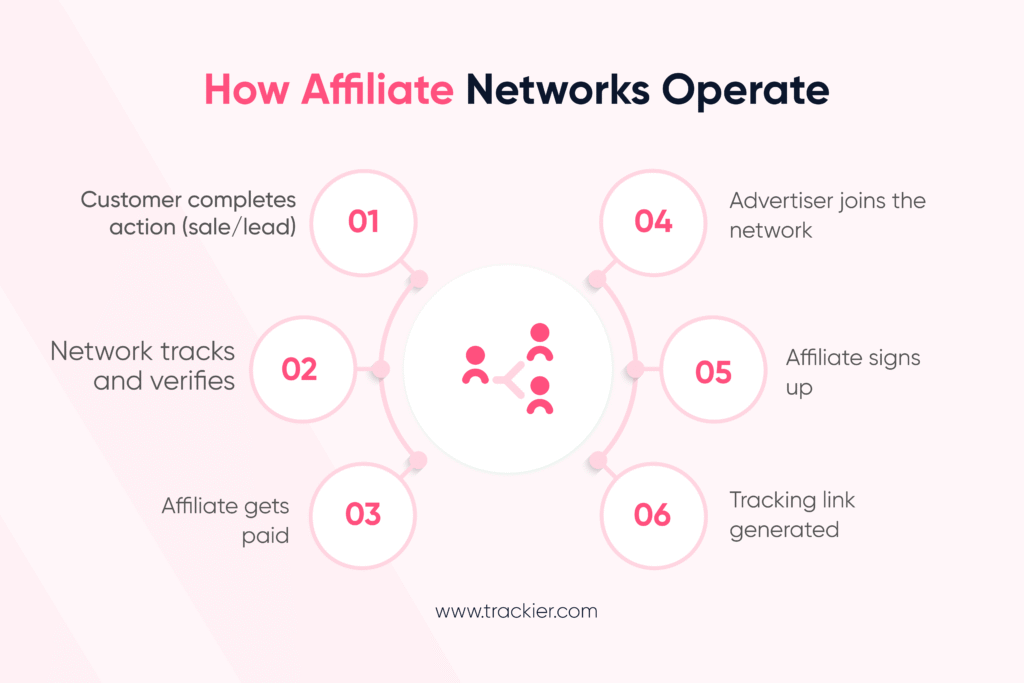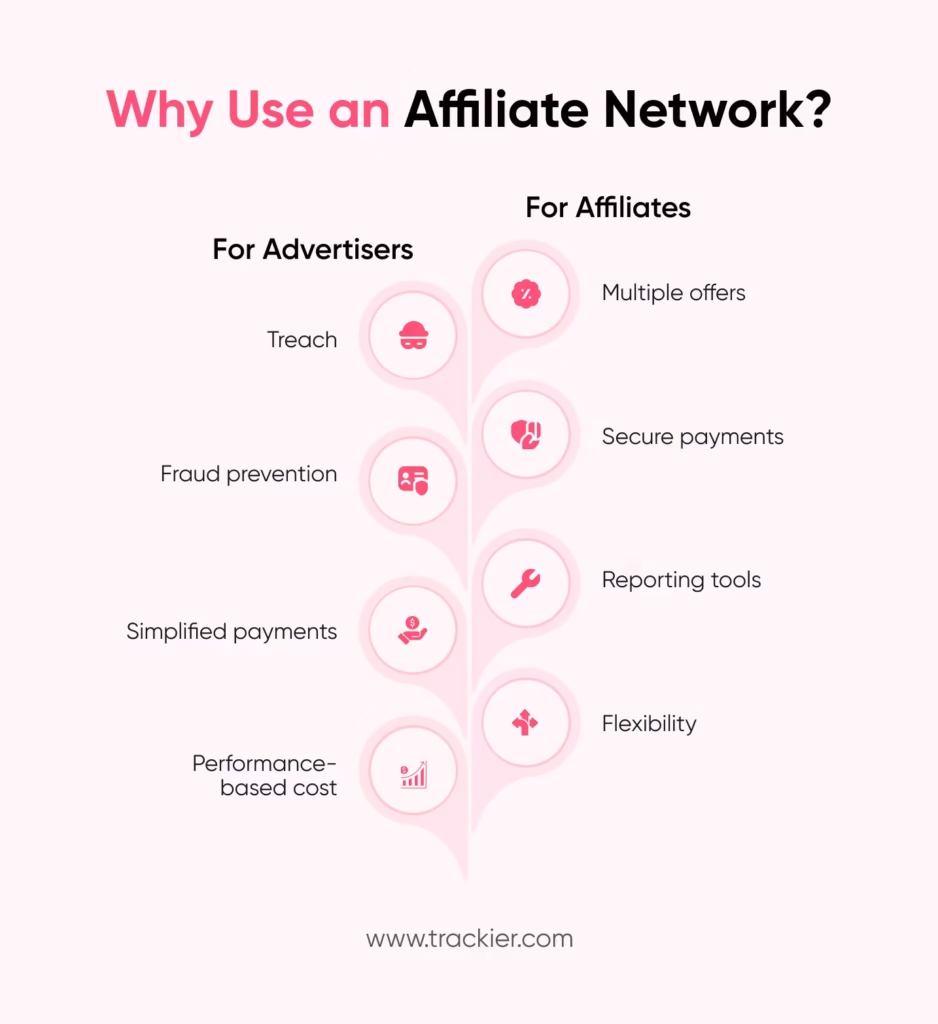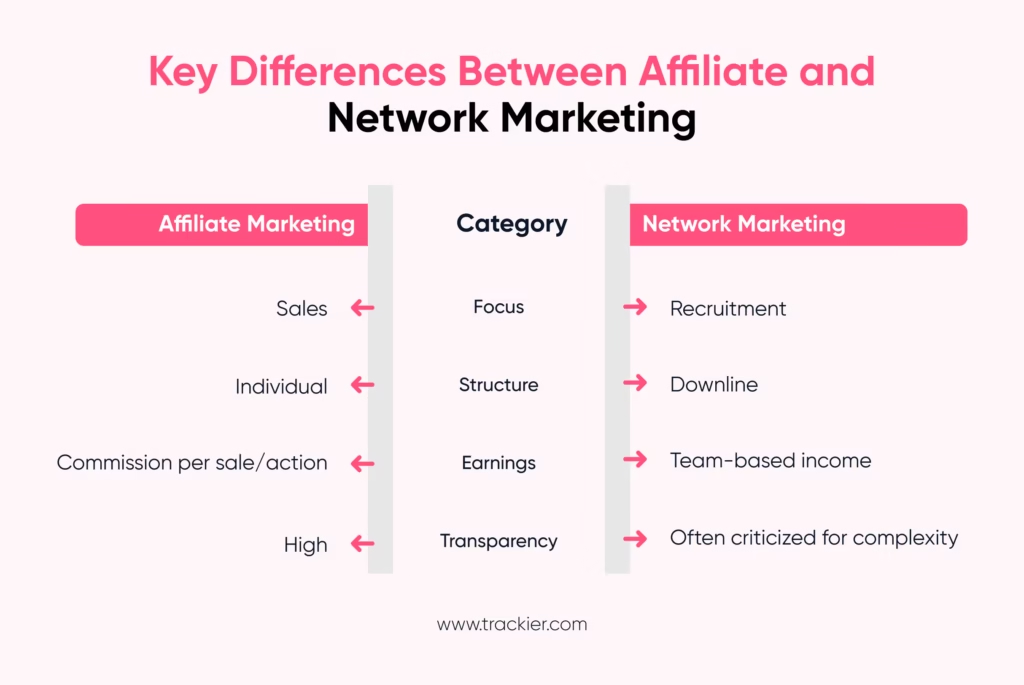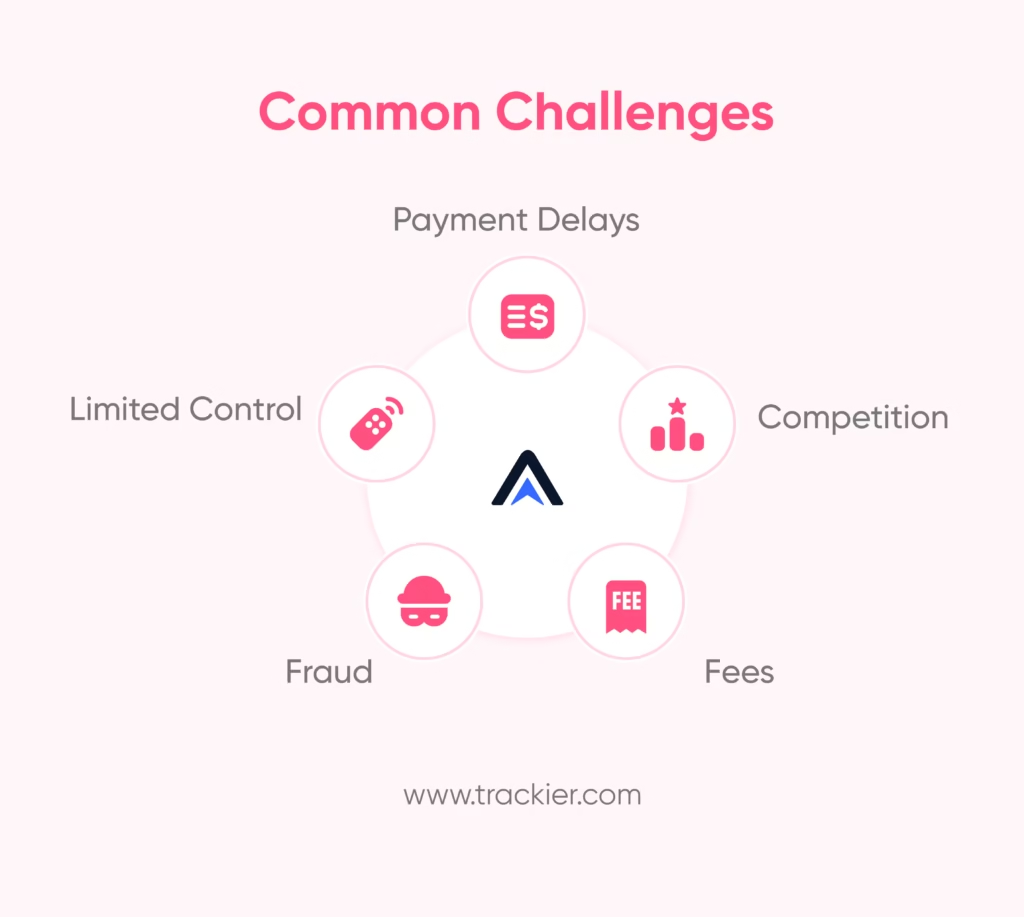Every year, businesses spend plenty on marketing, but not all of that money yields results. Having trustworthy partners who can generate clients rather than just impressions or clicks is a challenge for many businesses. On the other hand, people and publications who want to market products frequently have trouble finding reputable brands, receiving timely payment, or getting the necessary resources to monitor their progress. This disconnect causes conflict between advertisers and affiliates.
An affiliate network solves this problem by acting as a bridge between brands and affiliates. These networks offer conversion tracking, performance monitoring, and fair payout through the use of affiliate tracking software. This gives companies access to a network of motivated affiliates. It offers affiliates a safe approach to market several products while getting paid.
What Is an Affiliate Network?
An affiliate network is a platform that links publishers or affiliates (individuals, content creators, or businesses who market these products) with advertisers (businesses or brands that wish to sell their products). An affiliate network’s main roles are relationship management, lead or sales tracking, and payment handling for both parties.
Affiliates have the option to promote a brand’s offer after it gets listed on an affiliate marketing network. The affiliate receives a commission if a customer buys using their special affiliate link. The network makes sure that payments are handled accurately and that transactions are tracked correctly.
An affiliate marketing network offers tracking tools, fraud prevention strategies, and data dashboards. This approach builds trust because both advertisers and affiliates understand that they are operating in a controlled and verified environment.
How Does an Affiliate Network Work?
Affiliates are only compensated when they produce quantifiable activities, such as a sale, lead, or click, based on the performance model used by affiliate networks. The usual procedure is as follows:

- Advertiser joins the network – A brand signs up with an affiliate network to promote its products or services. They set marketing guidelines, payment arrangements, and commission rates.
- Affiliates join the network – Affiliates register to use available offers. They are free to select the products or brands they wish to advertise.
- Use of tracking links – Affiliates are given unique tracking links by the network. These links keep an eye on consumer behavior and guarantee that sales are appropriately acknowledged.
- Customer makes a purchase -The network logs a transaction when a user clicks on an affiliate link and performs the required activity.
- Payment is processed – After verifying the transaction, the network pays the affiliate on the advertiser’s behalf.
Affiliate networks use a variety of payment methods. One of the most popular is CPA affiliate networks (cost per action), in which affiliates get paid each time a customer completes a particular task, like making a purchase or signing up for a trial. CPL (cost per lead) and CPS (cost per sale) are two more models.
Benefits of Using an Affiliate Network
Affiliate networks offer several advantages for both advertisers and affiliates:
For Affiliates
- Multiple offers in one location – Affiliates can avoid negotiating with various brands separately.
- Security and trust – Networks guarantee dependable affiliate payment processing.
- Tools and resources – Availability of reporting, creative, and tracking tools.
- Flexibility – Affiliates don’t have to pay much up front to test out various offerings and areas.

For Advertisers
- Access to a vast affiliate network – Without having to hire each publisher one at a time, brands can quickly connect with a large publisher pool.
- Performance-based costs – The investment is more cost-effective because advertisers only pay when results are obtained.
- Fraud prevention – Networks usually have systems to detect invalid traffic or suspicious activity.
- Simplified payments – The network manages distribution, and the advertiser pays it instead of paying hundreds of affiliates directly.
Affiliate networks establish a structure that allows both parties to concentrate on outcomes while the network handles management.
Top Affiliate Networks
Advertisers and affiliates depend on a number of reputable affiliate networks. Among the most well-liked are:
- CJ Affiliate (formerly Commission Junction) – A long-standing network with global reach and diverse offerings across industries.
- Rakuten Advertising – It is well-known for its strong ties with leading brands and premium affiliates.
- Impact – Provides partnership automation and advanced tracking features.
- ShareASale – User-friendly network with thousands of offers, suitable for beginners.
- Amazon Associates – One of the most extensive affiliate programs, allowing affiliates to promote millions of products.
Affiliate Marketing and Network Marketing: Key Differences
Affiliate marketing and network marketing are sometimes used together. However, they are completely different models.

- Affiliate Marketing Network – Affiliates market products and services and get paid when leads or sales are produced. Payments are only based on success, and no other affiliates are hired.
- Network Marketing (MLM) – Focuses on building a sales team where members recruit others. Revenue is derived from both direct sales and the performance of the downline that was hired.
While network marketing puts more of an emphasis on hiring and team building, affiliate marketing is more performance-driven and product-focused. Affiliate networks are a simpler and more open choice for companies that want to grow without the hassle of hiring complicated structures.
Types of Affiliate Networks
There are various commission models that affiliate networks use. Among the main types are:
- CPA (Cost Per Action) – Affiliates get paid when a user takes a certain action, such as filling out a form, downloading an app, or making a purchase.
- CPL (Cost Per Lead) – When affiliates provide qualified leads for the advertiser, they receive payment.
- CPS (Cost Per Sale) – Affiliates are compensated only when a sale is completed.
- Hybrid Models – By combining several models, some networks allow advertisers to pay for both leads and sales.
Each affiliate network is appropriate for a different type of business objective. For instance, although CPS networks are typical in e-commerce, CPA affiliate networks are preferred by advertisers searching for quantifiable results, such as sign-ups.
Challenges of Using Affiliate Networks
Although affiliate networks have several advantages, advertisers and affiliates should be aware of the following drawbacks:

- Competition – It might be challenging to stand out when thousands of other affiliates are pushing similar products.
- Fees – A portion of commissions is taken by networks, which could lower overall profit margins.
- Fraud Risk – Click fraud, cookie stuffing, and phony leads can still happen even with fraud prevention solutions.
- Limited Control – Since the network oversees the majority of the engagement, advertisers may engage with affiliates less directly.
- Payment Delays – Depending on verification cycles, affiliates can experience delayed payouts in certain networks.
Both marketers and affiliates can set more reasonable goals and develop more effective plans by being aware of these challenges.
Bottom Line
An affiliate network is a reliable platform that simplifies the management of performance-driven marketing by connecting affiliates and advertisers. It offers precise tracking, quick payouts, and access to a wide range of prospects. Affiliates receive reliable deals to promote, while advertisers profit from affordable customer acquisition. These platforms remain an essential component of contemporary affiliate marketing. While there are challenges such as competition and fees, the overall advantages make affiliate networks a strong choice for businesses and affiliates who want to grow through performance marketing.
FAQs
What is an affiliate network?
A platform that links advertisers with affiliates who market their products or services is known as an affiliate network. The network manages commission payments and offers monitoring connections and reporting capabilities. This setup makes it easier for advertisers and affiliates to work together effectively by ensuring accurate tracking, lowering fraud risks, and streamlining collaborations.
How do I start affiliate marketing?
Choose a niche, join a reliable affiliate network, and pick products to promote to begin affiliate marketing. Make high-quality advertisements or content to increase traffic using special tracking links. You get paid when users make purchases or take other actions. For long-term success, concentrate on audience engagement, consistency, and trust-building.
What are CPA affiliate networks?
Platforms known as CPA affiliate networks pay affiliates when users finish an assigned task, such as registering, downloading an app, or making a purchase. This strategy is well-liked since it lowers the risk for advertisers and enables affiliates to make money even in cases where a complete purchase is not necessary.
How do affiliate networks make money?
Affiliate networks make money by collecting a portion of affiliate or advertiser commissions. They take a percentage of every transaction, charge monthly retainers, or charge service costs. This income enables networks to pay for expenses related to technology, fraud protection, tracking, and customer service, guaranteeing smooth operations for everybody involved.